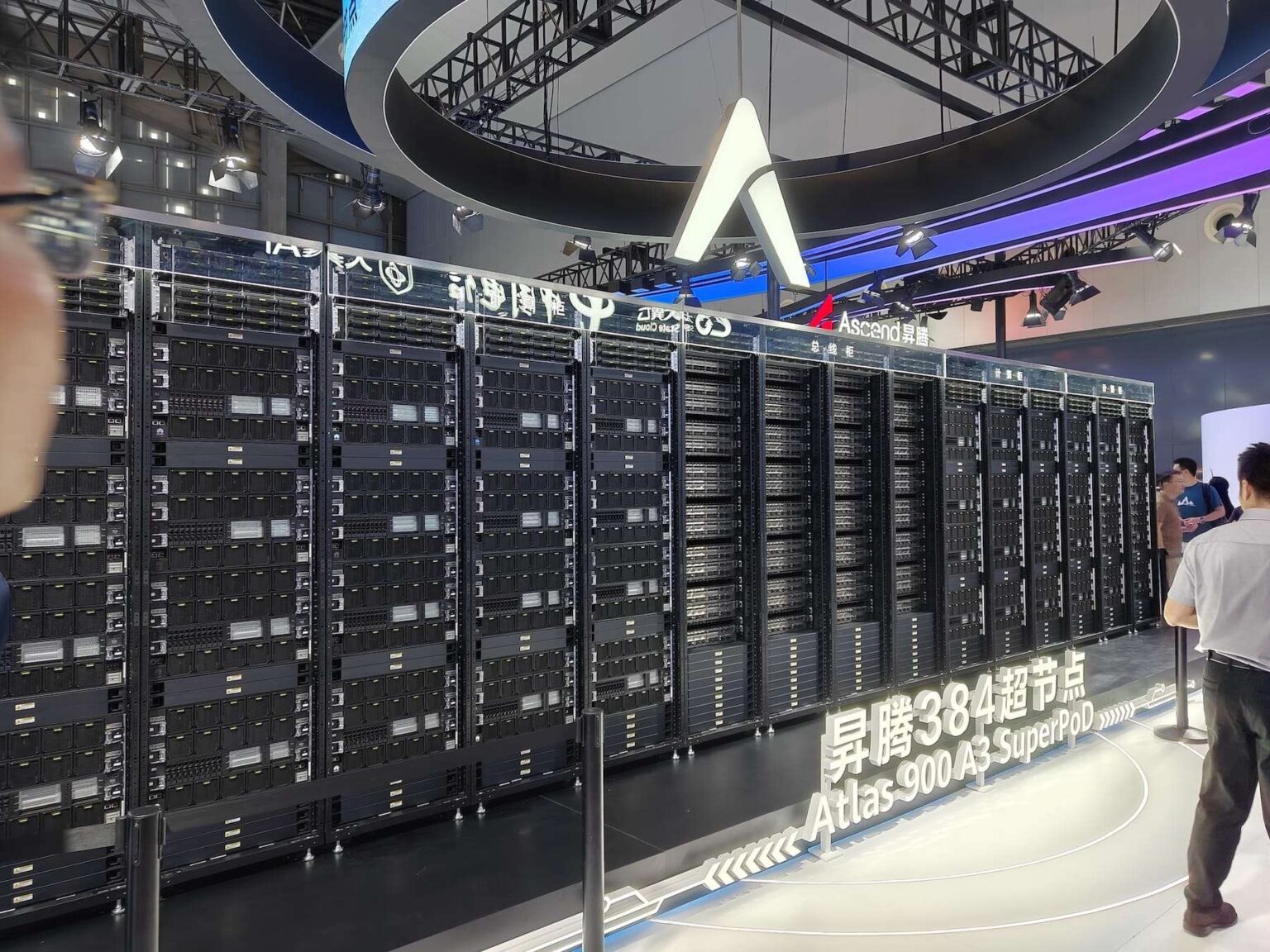At Huawei Connect 2025, the Chinese tech giant announced the launch of its SuperPoD open access architecture, along with a series of associated products including cards, modules, servers, and complete clusters. The announcement was made by Yang Chaobin, a member of the company’s board and CEO of the ICT Business Group, who emphasized that the goal is to build a “robust computing backbone” for all scenarios, supported by an open approach in both hardware and software.
A leap forward in scalable computing
The SuperPoD architecture is based on the UnifiedBus protocol, an internal standard that allows deep interconnection of physical servers to operate as a single logical server.
Traditionally, computing clusters have scaled by “stacking servers,” which leads to issues of uneven resource utilization and frequent failures during large-scale model training. With SuperPoD, Huawei ensures that performance grows linearly with cluster size, avoiding the efficiency drops seen in conventional architectures.
According to the company, over 300 Atlas 900 A3 SuperPoD units had already been shipped by 2025, deployed across 20 clients in sectors such as internet, finance, telecommunications, energy, and manufacturing.
New products in the SuperPoD family
At the event, Huawei unveiled a comprehensive catalog of solutions covering everything from hyperscale data centers to medium-sized enterprises and even workstations.
Atlas 950 SuperPoD: flagship for massive AI
- Designed for ultra-large-scale AI tasks.
- Includes innovations in components, protocols, and optoelectronics.
- Features an orthogonal cable-less architecture between nodes.
- Integrates “blind-mate” liquid cooling connectors that prevent leaks.
- Supports UB-Mesh topology, enabling full interconnection of NPUs at the board, rack, and multi-rack levels.
- Scales in steps of 64 NPUs, up to a maximum of 8,192 interconnected NPUs without convergence.
Atlas 850 and 860 SuperPoD: enterprise servers
- The first air-cooled SuperPoD servers, aimed at companies without liquid cooling facilities.
- Each unit features 8 Ascend NPUs, suitable for post-training and multiple inference scenarios.
- The cluster can deploy up to 128 nodes, reaching 1,024 NPUs.
- The Atlas 860 version offers greater modularity and performance with more flexible configurations.
Atlas 350 Card: core for recommendation apps
- Built on the Ascend 950PR chip.
- Offers double the vector processing capacity and more granular memory access compared to previous generation.
- Enhances recommendation service performance by 2.5 times.
- Can be used alone or connected in up to 4 cards via UnifiedBus to pool computing and memory resources.
TaiShan 950 SuperPoD: general-purpose computing
- The first SuperPoD server for general computational tasks.
- Offers nanosecond latency and bandwidths of TB/s.
- Optimized for database workloads, VM migration, and big data operations.
- Supports memory pooling to improve efficiency in heterogeneous environments.
Open hardware and industry collaboration
One of the key pillars of the announcement is the openness of the SuperPoD technology to industry partners:
- Open access to the UnifiedBus protocol and SuperPoD reference architecture, enabling other manufacturers to develop compatible products.
- Openness of SuperPoD hardware, including NPU modules, air- and liquid-cooled servers, AI cards, CPU boards, and cascade cards.
This will allow clients and partners to develop their own products based on UnifiedBus, tailored to specific industry scenarios, from banking to energy to telecom.
Open software: UB OS Component and Ascend ecosystem
The company also announced that the UB OS component will become open source. Its code can be integrated into communities such as openEuler or added as plugins in existing operating systems, ensuring joint evolution with the community.
SuperPoD also relies on an expanding open software ecosystem:
- Ascend CANN toolkit, now available as open source.
- The Mind series (for training, inference, and deployment), fully open.
- Active collaboration with communities like PyTorch and vLLM to facilitate developer innovation in generative AI environments.
An open, long-term ecosystem
Yang Chaobin highlighted in his speech that Huawei’s commitment is clear:
“We are committed to technological innovation and openness. We will work alongside clients and partners to create a solid computing backbone for all scenarios, fostering a vibrant ecosystem and shared benefits.”
The strategy aims to position SuperPoD as the spinal cord of intelligent computing, with scalable solutions spanning AI training farms, enterprise data centers, and sector-specific workstations.
Huawei Connect 2025: intelligence in all scenarios
This year’s event, under the theme “All Intelligence”, takes place from September 18 to 20 in Shanghai. It tackles AI from three angles: strategy, technology, and ecosystems. Besides SuperPoD, the company will showcase new digital infrastructure solutions, development tools, and industry-specific applications.
Summary
Huawei has turned the SuperPoD concept into a strategic initiative to meet the rising demand for AI computing power. Its open approach—spanning both hardware and software—aims to expand industry collaboration and build a sustainable, shared ecosystem.
With over 300 units already deployed in 2025 and clients across key sectors, Huawei positions itself as a central player in the global race to deliver high-efficiency, low-latency, and highly scalable computing infrastructure.
Frequently Asked Questions (FAQs)
What is Huawei’s SuperPoD architecture?
It’s a new design based on the UnifiedBus protocol, which interconnects physical servers as if they were a single logical unit, boosting efficiency, reliability, and scalability in compute clusters.
Which sectors are already using SuperPoD in 2025?
More than 20 clients from industries such as internet, finance, telecom, energy, and manufacturing have implemented Atlas 900 A3 SuperPoD units.
What are the differences between Atlas 950 and Atlas 850 SuperPoD?
The Atlas 950 is a liquid-cooled, ultra-scale solution for massive AI, while the Atlas 850 is an air-cooled, enterprise-focused model that can form clusters of up to 1,024 NPUs.
Will Huawei release the software needed to operate SuperPoD?
Yes. The UB OS component is now open source and integrates with communities like openEuler. It also supports the Ascend ecosystem and popular frameworks like PyTorch.

